6 things you need to know before buying a dehumidifier – I'm a home tech editor and here's how to make sure yours is the right for your home
From type and size to features and noise levels, consider these elements before buying
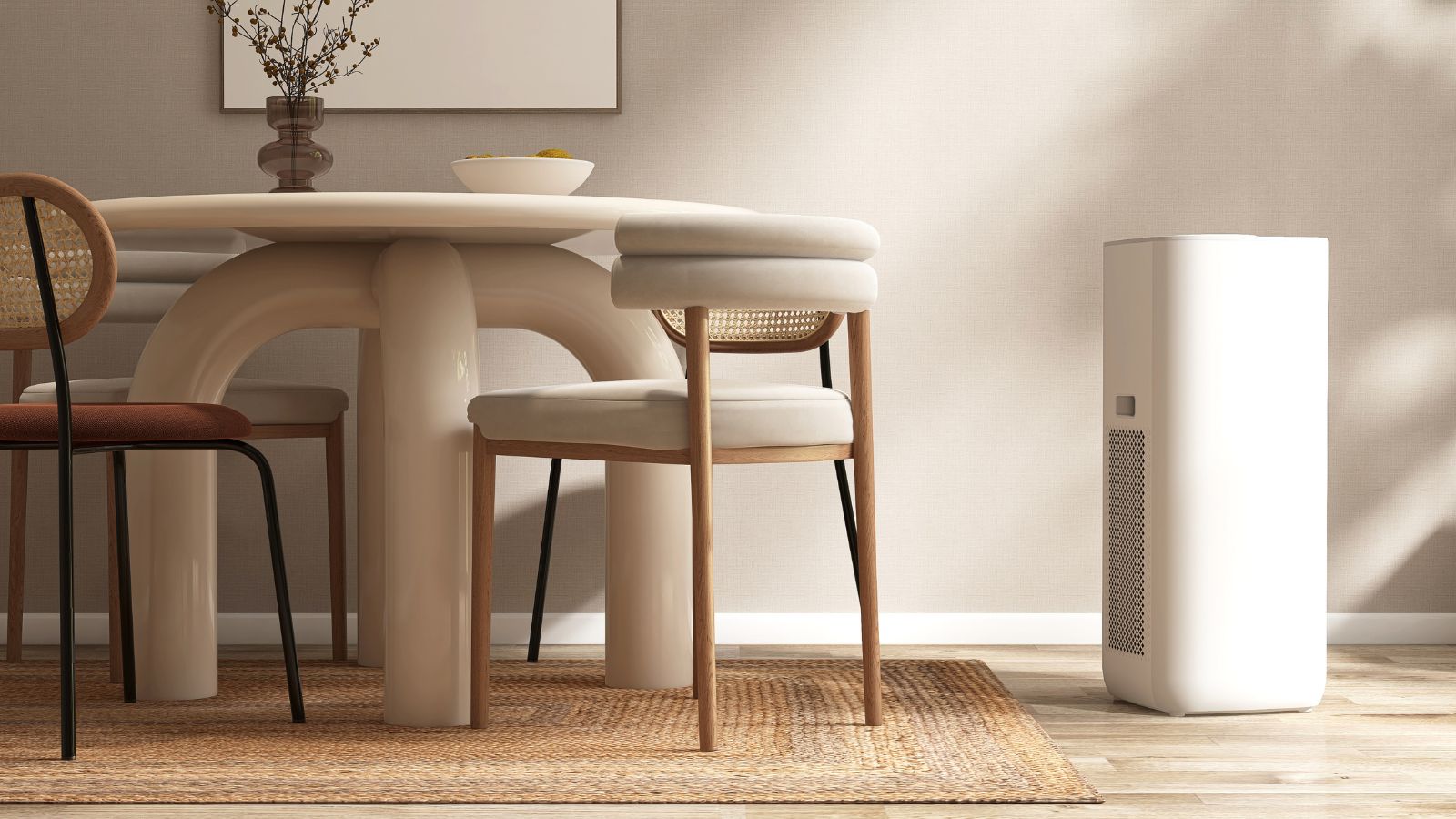
Dehumidifiers are superb at tackling damp, mold, mildew and most other excessive moisture issues in the home. But they can be pricey investments, especially when you're aiming for all the bells and whistles.
Understanding the different types of dehumidifiers, their common features and functions will help inform your decision picking the right dehumidifier. Until you've used one and know what a dehumidifier does, it's hard to know what to look out for and what to avoid.
I'm H&G's home tech editor and I regularly test appliances like dehumidifiers and purifiers, but I also caught up with a couple of veteran HVAC experts to find out the key things to know before buying a dehumidifier.
Things I wish I knew before buying a dehumidifier
Once you get to grips with the following to work out how long it will take a dehumidifier to dry out a room, you'll easily find the right dehumidifier for your home and to best suits your needs.
1. There are different types
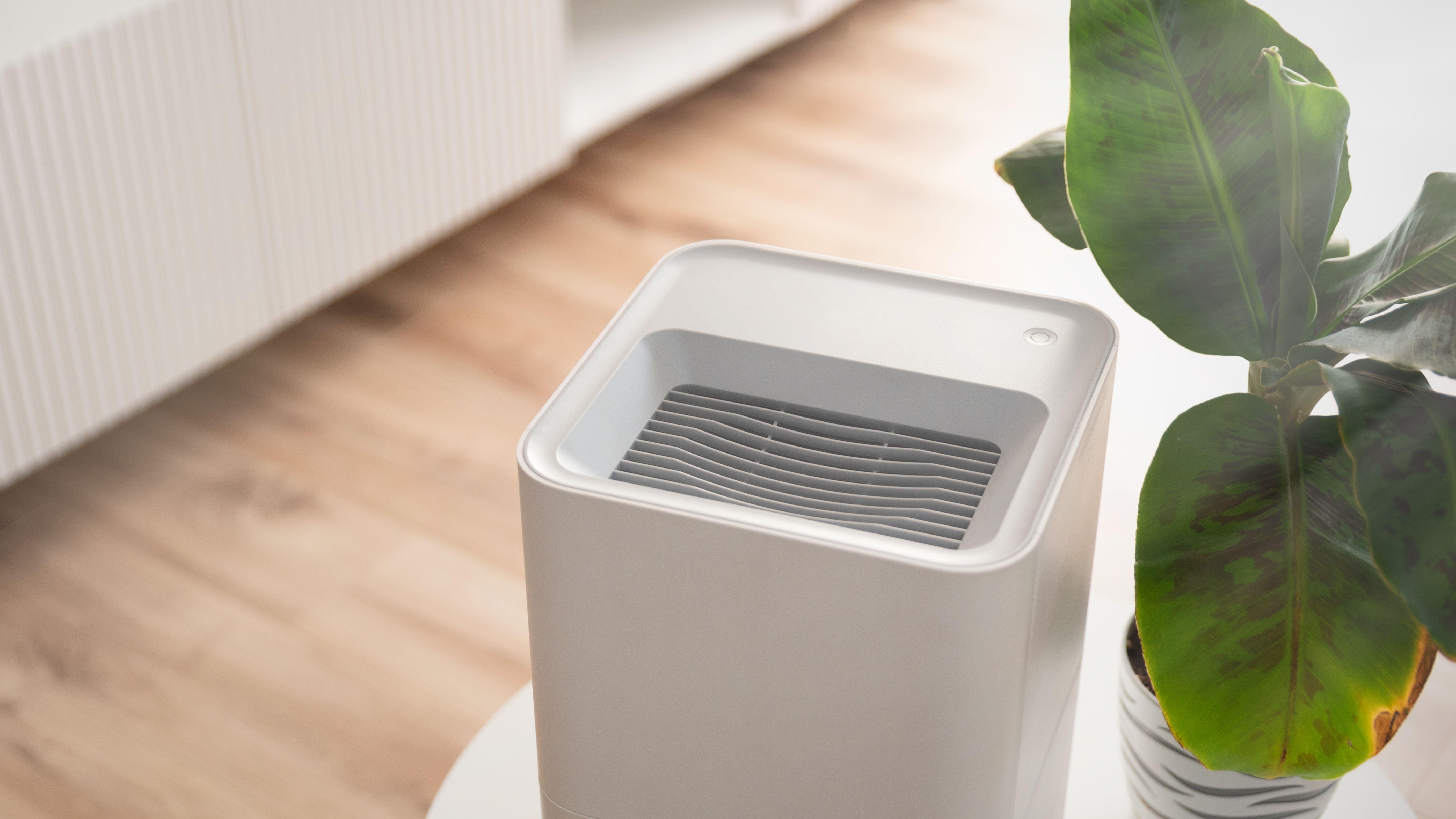
Dehumidifier on side table next to plant
The most popular dehumidifier you'll find is a compressor one, which essentially uses condensation to remove humidity from the air. It has coils, which are cooled for the warm, moist air to condense against.
Another common dehumidifier type is a desiccant dehumidifier. Instead of condensing the moisture, a desiccant dehumidifier absorbs the moisture using a wheel that acts similarly to an extractor fan or sponge. A heater and fan work consistently to regenerate this element for continued use.
The main difference here comes down to where you place your dehumidifier and when you're using it. Compressor dehumidifiers work best in warm environments as the coils work less efficiently in cooler temps (60°F or less). Desiccant dehumidifiers work year-round and tend to be lighter and quieter, but don't typically have the high extraction rates of compressor dehumidifiers.
So, desiccants are ideal for colder rooms like basements, while compressors are better for inside the home. Desiccant dehumidifiers can also release warmer air into the room, helping to further dry those cold, wet areas.
You can also find non-electric dehumidifiers. They aren't nearly as effective but they can provide affordable, small-scale dehumidifying if you don't need as much power. I use one in my car for example, and it removes overnight moisture so that the windows are clear in the morning.
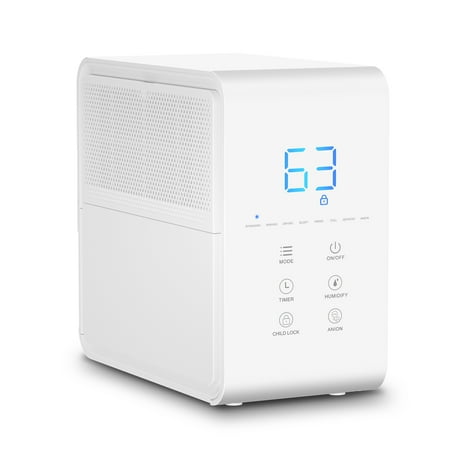
This small compressor dehumidifier can cover 1,500 square feet and has a 30-pint capacity, which is great at this price. It also has auto-shut off when it's full and child lock protections.
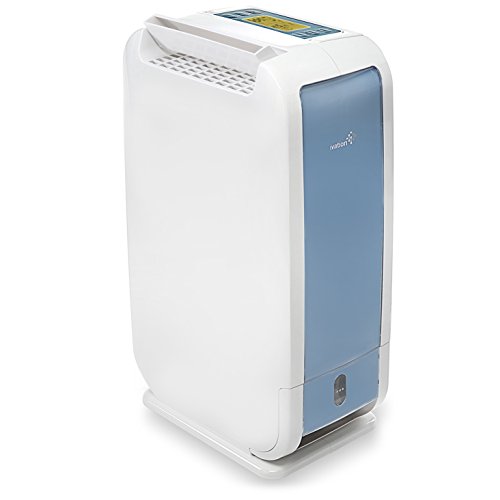
This small, affordable dehumidifier has all the benefits of a desiccant model: it's quiet, lightweight and works in temperatures from 33°F to 104°F.
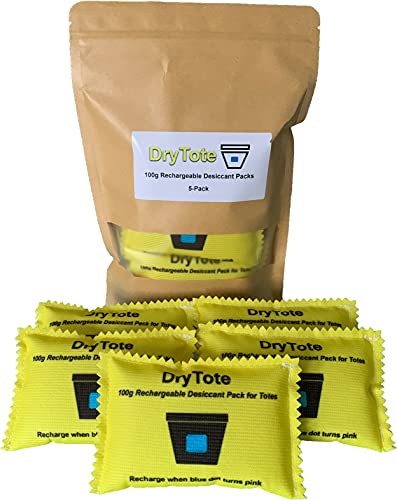
I use dehumidifying pouches similar to these to remove moisture from my car overnight, and they work great. Just put them in the microwave when they're full and they'll be ready to go once again.
2. Get the right size
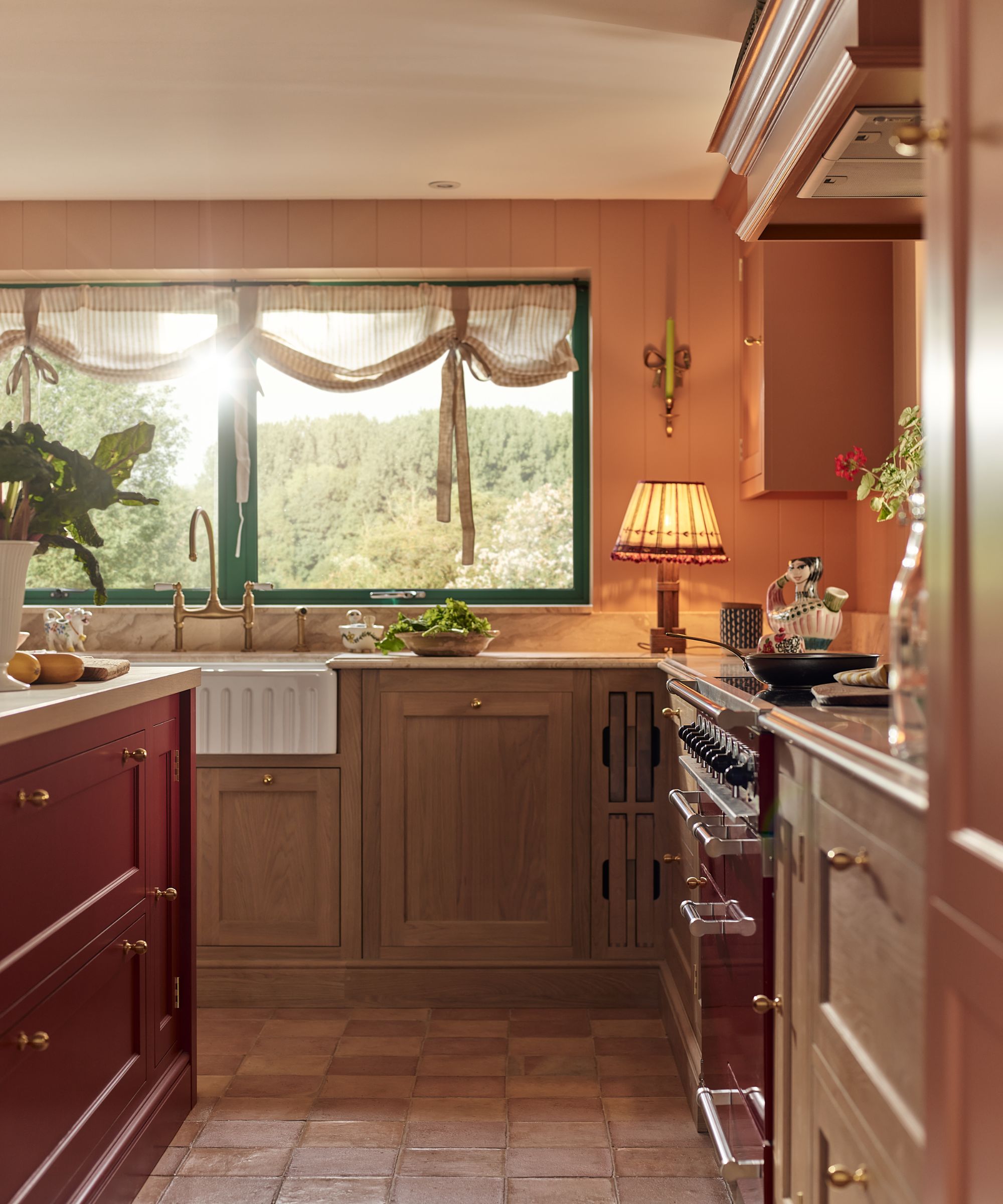
Like the best air purifiers, a dehumidifier's size dictates how much indoor space it can cover. You'll also want to consider its capacity too; as most dehumidifiers need to be emptied manually, the bigger the tank is, the less often you have to empty it.
'Choosing the wrong size can frustrate you if the unit can't keep up with the moisture in your space,' says Josh Mitchell, seasoned HVAC technician from Air Conditioner Lab.
Josh adds that dehumidifiers are usually measured in 'pints per day' – measuring how much water it can remove from the air over time. 'A small 20-pint model works well for bedrooms or closets, but larger spaces like basements need at least a 50-pint unit,' Josh advises.
3. You don't have to drain it yourself
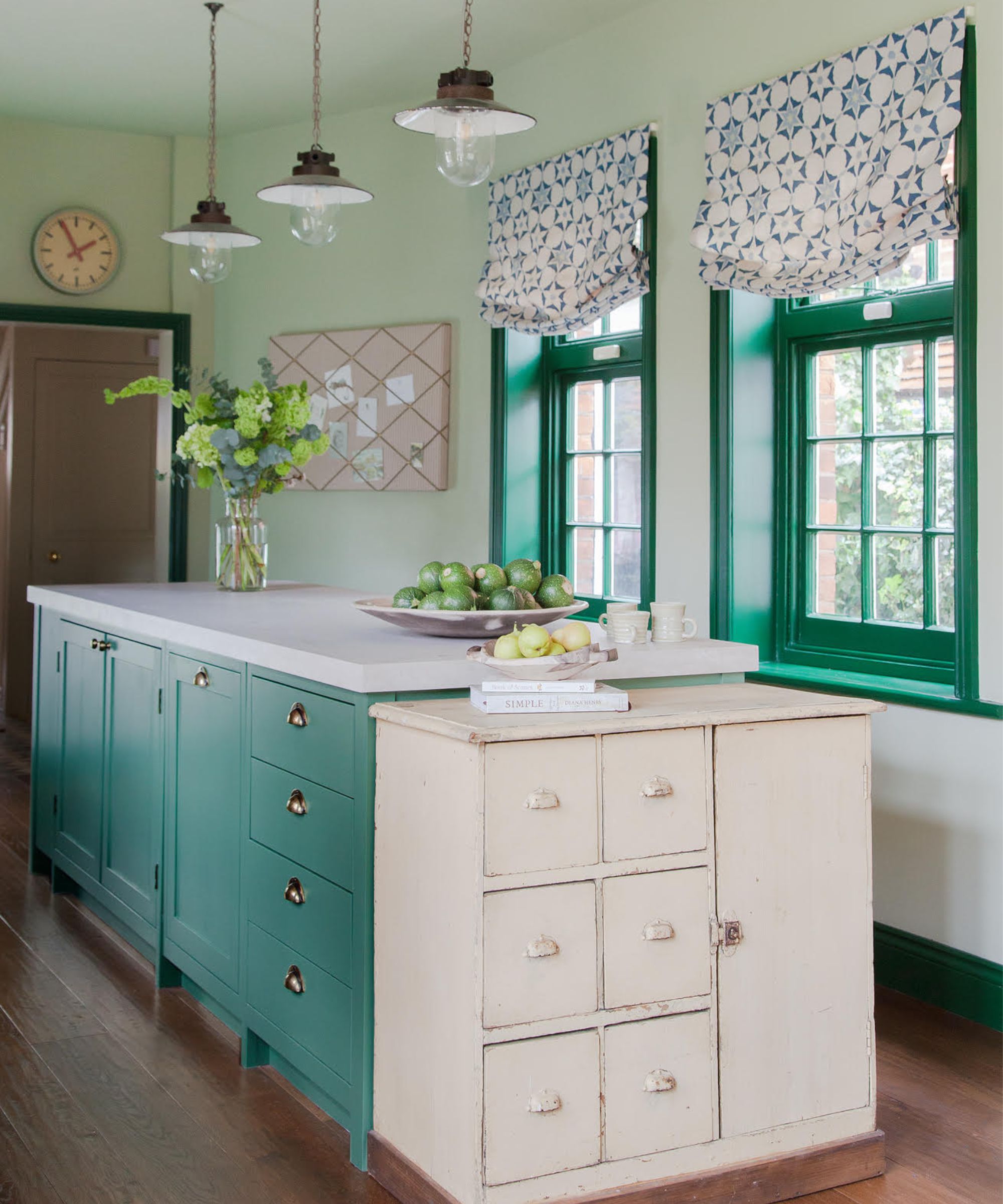
As a dehumidifier turns the moisture in the air into liquid in a water tank, it needs to be emptied. Usually this is something you'll do whenever it gets full (and most dehumidifiers will stop operating once the tank is full), but there are models with self-draining systems. If you think your dehumidifier's going to get a lot of use, it's worth considering so you can set it and forget it.
'If you don't want to empty the water tank daily, choose a model with a built-in pump or continuous drain option,' explains Josh.
A continuous drain setting works by attaching a hose from the dehumidifier to a drain, then gravity does the work. But if you invest in a dehumidifier with a pump, it will automatically drain the water once it reaches a certain level, and can empty it vertically or horizontally.
If you have a floor drain or low access to a water outlet, a dehumidifier with continuous drain is all you need. If not, spend a bit extra for a self-draining pump. It'll make all the difference.
4. Humidity settings help
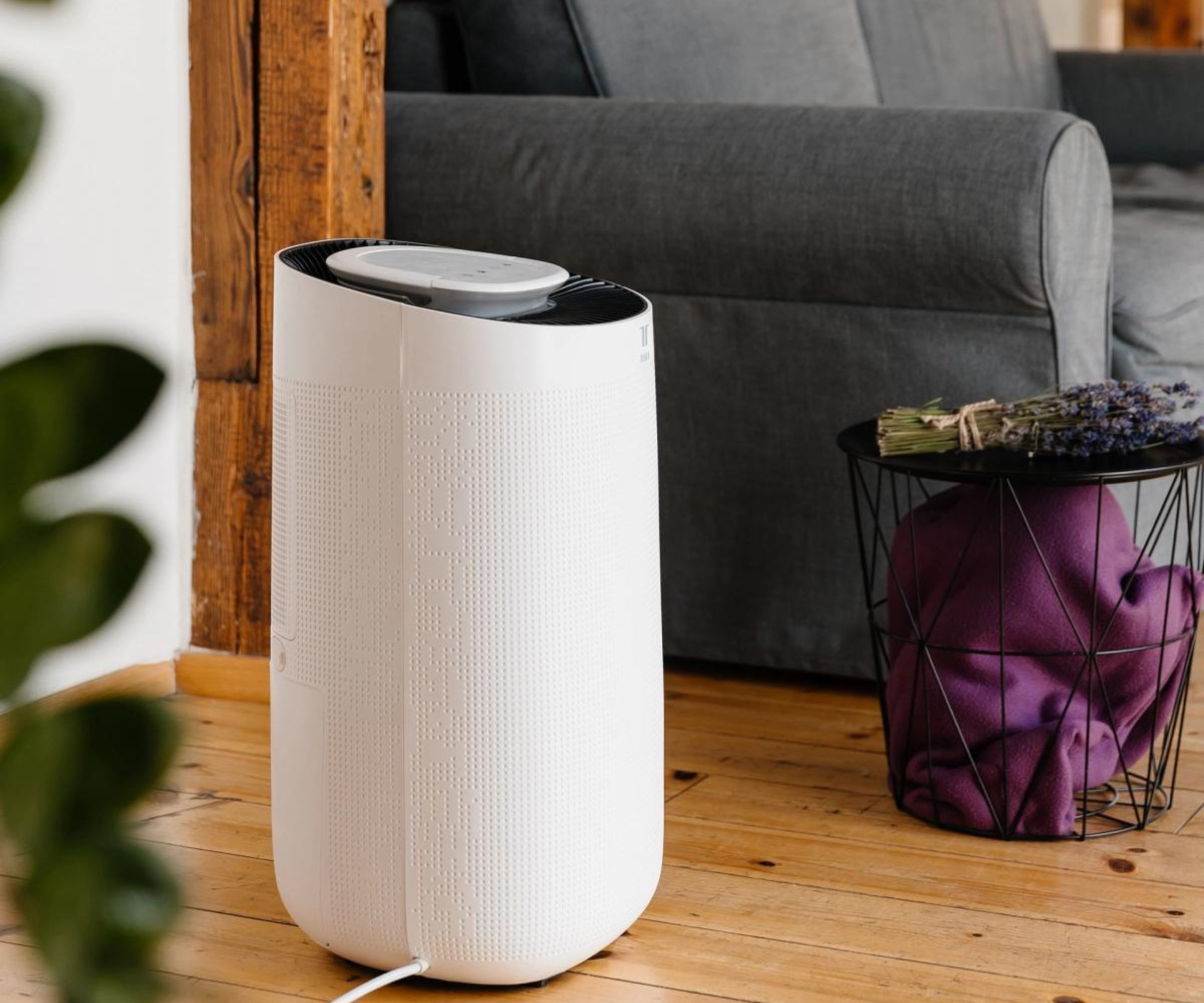
A TESLA dehumidifier
Cheaper models, like this budget dehumidifier from Amazon that our writer found kicked condensation to the curb are able to remove moisture from the air but won't always be able to achieve the right relative humidity (RH).
What a dehumidifier does is remove moisture from the air. But not all dehumidifiers have an accurate humidistat to be able to reach a desired relative humidity (RH), 'between 30% and 50% is ideal for comfort', according to HVAC pro Josh Mitchell.
'When the air in a home is too dry, it typically contains more irritants and pathogens, which are better to avoid for people with respiratory diseases, particularly allergies,' explains Glenn Gault, CEO of Gault Heating & Cooling.
Too humid air is a favorable environment for mold and mildew growth, which is also bad, because mold and mildew are serious allergens.'
A dehumidifier without humidity control can easily leave the room either too dry or too humid, so it's worth opting for one with more control, even it costs a little extra.
5. Think about noise and energy levels

You might start getting annoyed at your choice if your dehumidifier is constantly disturbing your sleep, work or relaxation time due to its noise level when operating.
'Most dehumidifiers, especially larger ones, emit a noticeable hum,' says Josh. 'Check the decibel rating if you place it in a living area or bedroom. Anything below 50 dB is relatively quiet.'
You can also find ones with dedicated sleep modes with quieter operation.
A dehumidifier, like any electrical appliance, will also cost you to keep running. Over time, the energy efficiency of your unit will influence how much you're paying in bills, so it's a smart move to choose one that's efficient, even if the initial outlay is more.
'Dehumidifiers can be energy-intensive if used regularly,' Josh Mitchell adds, so it's important to look for those with an ENERGY STAR rating.
6. Extra features make a difference
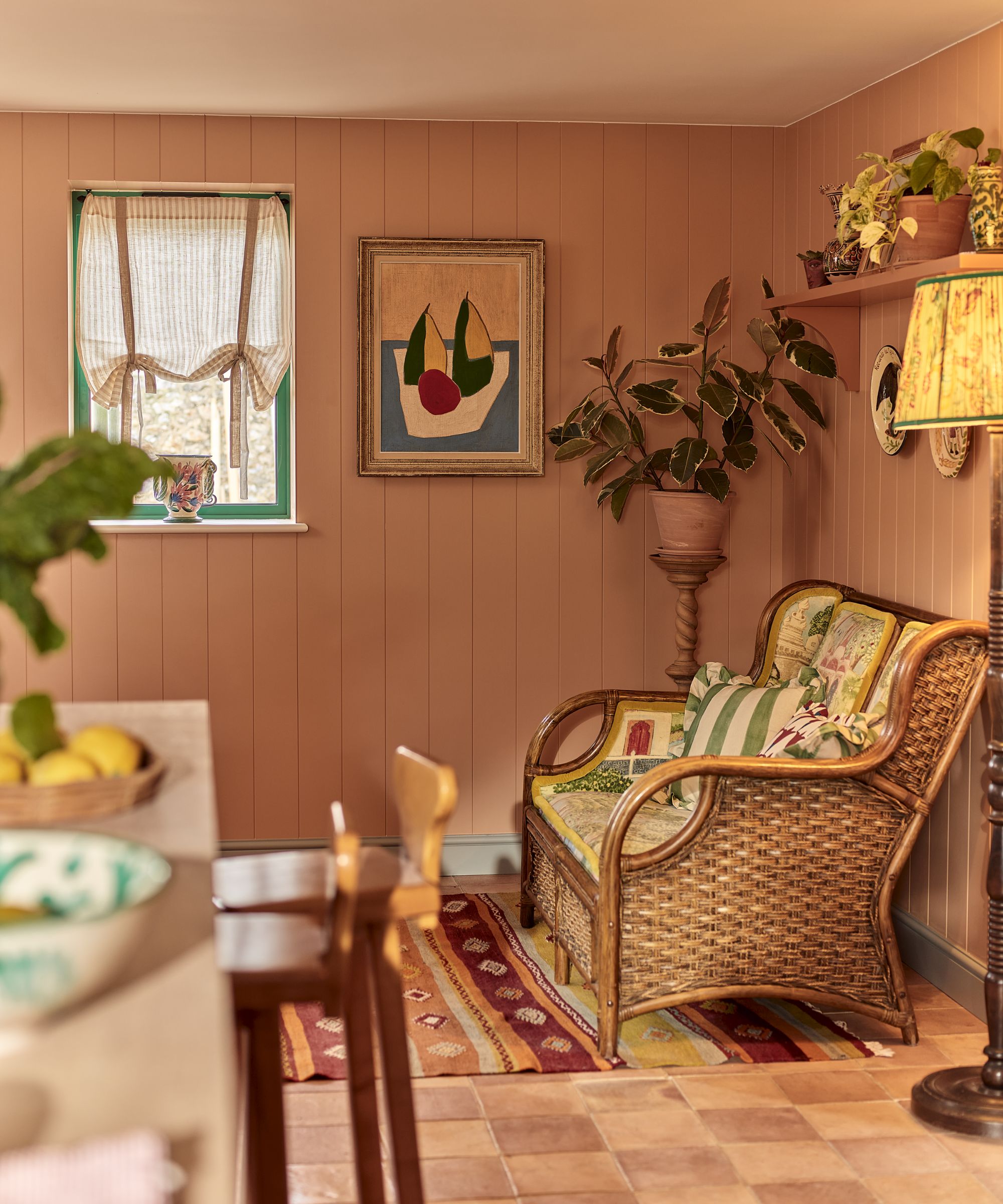
This is strong advice when buying any long-term appliance, but read into what extra features are available, to see if they're worth the spend by making your life easier.
An example would be air purification, so instead of having both a dehumidifier and air purifier, you can choose a dehumidifier that does both, saving floor space and the cost of another unit. Look for ones with HEPA filters for effective air purification.
A special laundry mode is a savior when you're looking for ways to dry clothes quickly with your dehumidifier. It'll increase fan speed in a localized area to minimize laundry drying time, which will make a difference come winter.
The Frigidaire Gallery 50-Pint Dehumidifier we've reviewed has WiFi connectivity and app controls, which means you can safely use and monitor your dehumidifier when you're not in the room.
If you're not choosing with one that self drains, this is a great way of notifying yourself every time you need to empty it as it'll pause itself when it's full.
My top dehumidifier picks
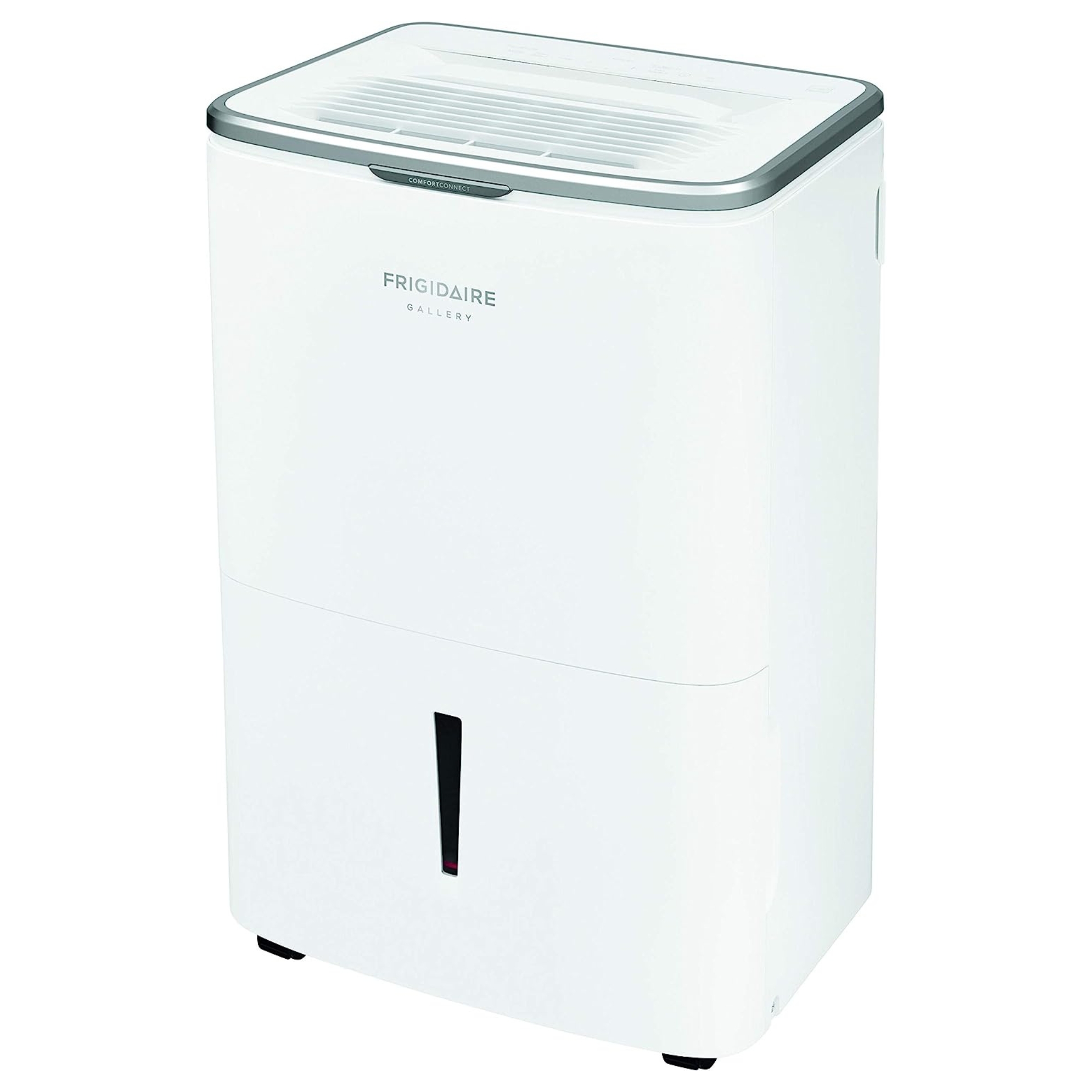
This is the full package dehumidifier. It does an amazing job of removing moisture from the air, has a huge 50-pint capacity and continuous drain option, and can be controlled via WiFi.
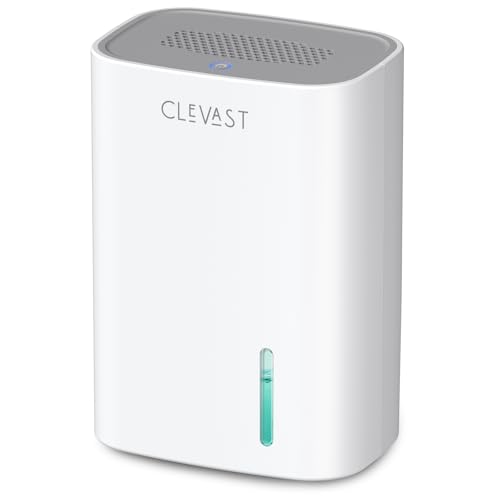
If you're only needing to dehumidify a small space like an office or a small bedroom, save your money and buy a compact, affordable unit like this 30-oz dehumidifier.
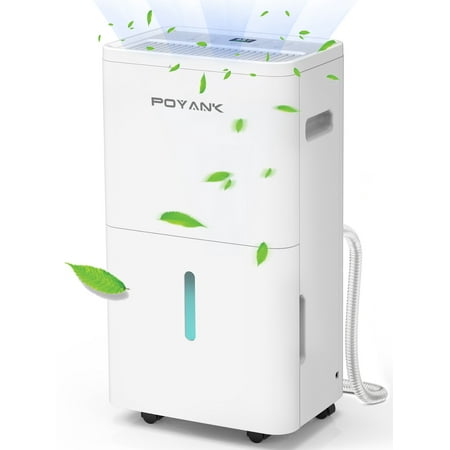
If you're looking to tackle a big room like a basement or open-plan living space, this dehumidifier from Poyank has you covered across a whopping 4,500 square feet with its 70-pint tank.
Next, find out how to make DIY dehumidifiers for mild moisture control around the whole house, and whether you should a dehumidifier during the day or at night.
Sign up to the Homes & Gardens newsletter
Design expertise in your inbox – from inspiring decorating ideas and beautiful celebrity homes to practical gardening advice and shopping round-ups.

Dan is the Home Tech Editor for Homes & Gardens, covering all things cleaning, smart home, sound and air treatment across the Solved section. Having worked for Future PLC since July 2023, Dan was previously the Features Editor for Top Ten Reviews and looked after the wide variety of home and outdoor content across the site, but their writing about homes, gardens, tech and products started back in 2021 on brands like BBC Science Focus, YourHomeStyle and Gardens Illustrated.
They have spent more than 200 hours testing and reviewing vacuums for Homes & Gardens, and have even visited Dyson's engineering labs for the full low-down of the ins and outs of our trusty cleaners.
Dan has a BA in Philosophy and an MA in Magazine Journalism. Outside of work, you'll find them at gigs and art galleries, cycling somewhere scenic, or cooking up something good in the kitchen.
-
 10 of the best plants for clay soil – experts recommend the flowers, shrubs and trees that can thrive in challenging conditions
10 of the best plants for clay soil – experts recommend the flowers, shrubs and trees that can thrive in challenging conditionsDiscover what varieties to grow if you want the best plants for clay soil
By Sarah Wilson
-
 The biggest curtain trends to follow in 2025 – 8 key looks to shop that will instantly elevate your rooms
The biggest curtain trends to follow in 2025 – 8 key looks to shop that will instantly elevate your roomsThese are the colors, styles, and materials to embrace in your windows this year if you want desirable drapes, plus our favorite places to shop the trends
By Lilith Hudson
-
 The 5 worst things you can do to your fridge – these will drive up energy costs and result in pricey and regrettable repairs
The 5 worst things you can do to your fridge – these will drive up energy costs and result in pricey and regrettable repairsIt's crucial to swerve these blunders, appliance experts warn
By Ottilie Blackhall
-
 Extend the lifespan of your appliance with 5 simple but crucial washing machine maintenance tips
Extend the lifespan of your appliance with 5 simple but crucial washing machine maintenance tipsFrom cleaning the filters to keeping the door open, experts reveal the washer tips they swear by
By Andy van Terheyden
-
 5 vital ways a home battery backup can help with your most urgent needs in a power outage – from heating to flood prevention and calls
5 vital ways a home battery backup can help with your most urgent needs in a power outage – from heating to flood prevention and callsExperts say they're a worthy investment
By Clement Feng
-
 I’m an HVAC technician, and this is when I turn on my AC each year – plus 5 checks I always do beforehand
I’m an HVAC technician, and this is when I turn on my AC each year – plus 5 checks I always do beforehandSave yourself an AC hassle by running my checks and turning it on before big heat hits
By Josh Mitchell
-
 6 things you should never throw in the trash – and what to do for safe disposal instead
6 things you should never throw in the trash – and what to do for safe disposal insteadFrom batteries to space heaters, experts reveal what not to throw
By Andy van Terheyden
-
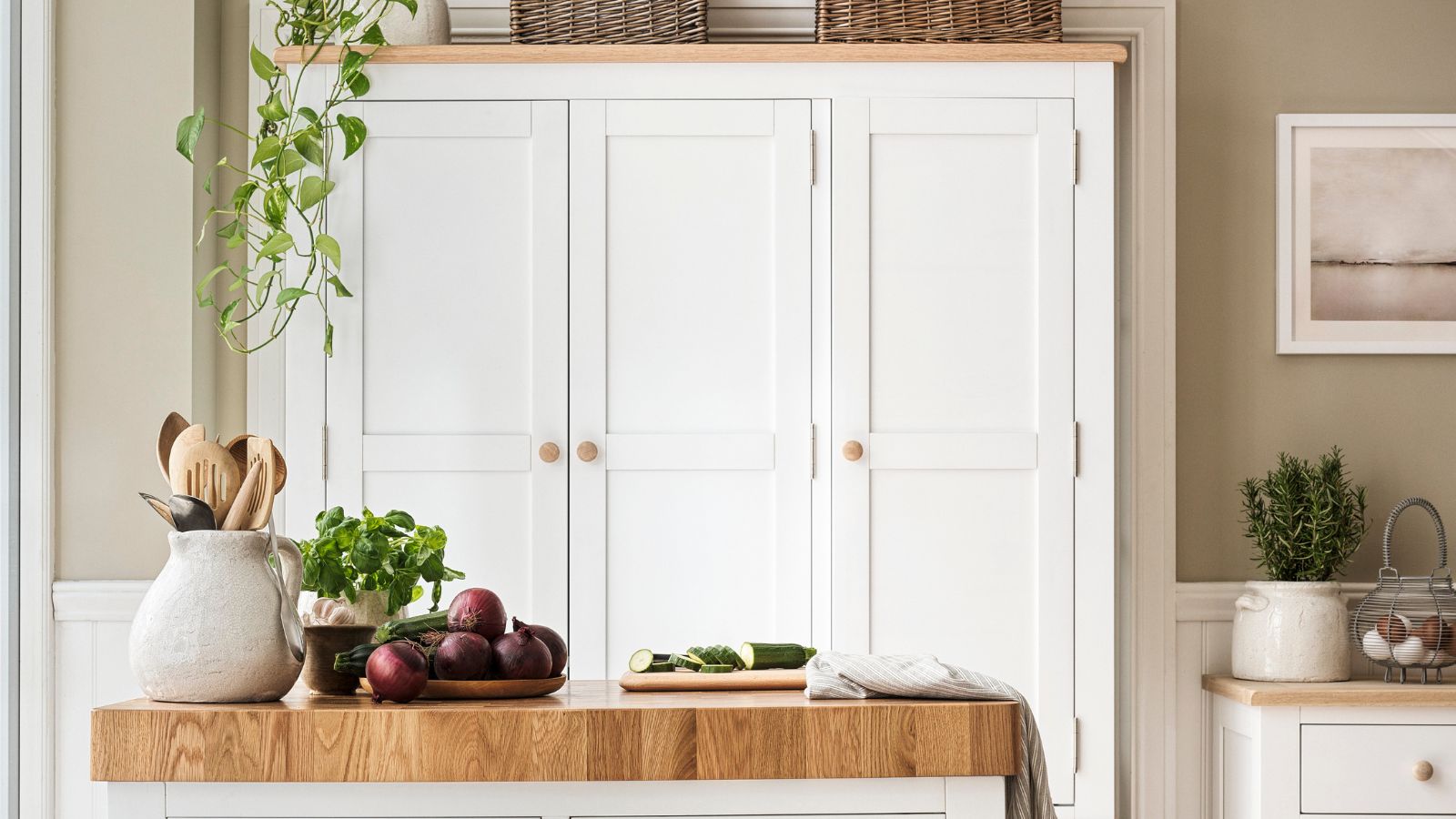 7 spring home maintenance mistakes to never make – overlooking these now can lead to pest problems and structural damage
7 spring home maintenance mistakes to never make – overlooking these now can lead to pest problems and structural damageHome improvement pros share common mistakes and what to do instead
By Eve Smallman
-
 10 common but little-known HOA fines to watch out for – and how to avoid them
10 common but little-known HOA fines to watch out for – and how to avoid themFrom sprinklers to garage doors and external pipes, your HOA contract may leave you open to a fine
By Eve Smallman
-
 I’m a homes editor and these are the 4 vital storage items I’m 'adding to cart' this spring – and why you should too
I’m a homes editor and these are the 4 vital storage items I’m 'adding to cart' this spring – and why you should tooI've learned a few hard lessons in recent weeks and these storage solutions will help
By Punteha van Terheyden